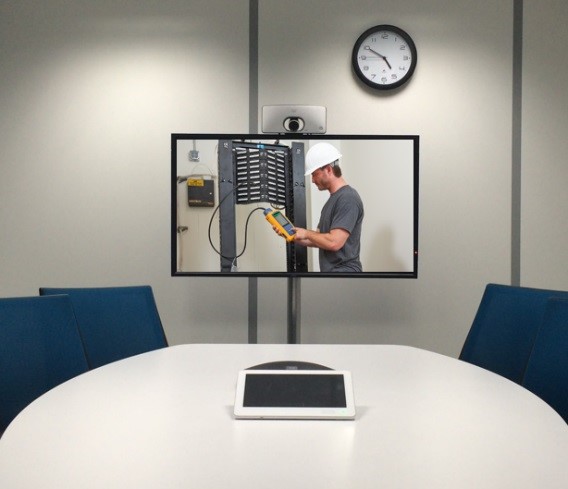AV over Twisted Pair: What Do I Need to Test For?
2019 年 7 月 17 日 / 一般、基礎学習、インストールとテスト、アップグレードとトラブルシューティング、ベストプラクティス
昨今、ビデオ会議やデジタル・サイネージなどのオーディオ・ビジュアル・システムに対応したケーブル配線システムの展開が求められています。
Many of these applications utilize twisted pair cabling, and technology advancements now make it possible to deliver power to video displays simultaneously with these video signals over the same cabling. これらの AV システムに対応したケーブル配線システムの展開とテストを行う場合には、お客様が期待する完璧な画質を実現するための最良のテスト方法を理解する必要があります。
IP or Not, It’s Still Twisted Pair
One of the most common AV protocols is HDBaseT for transmitting uncompressed 4K video signals, audio, 100BaseT Ethernet data, power and various control signals over common twisted pair category cabling up to 100 meters. これは、IP ベースのビデオ・システムと似ており、ケーブル配線と接続性についても同じであるように見えますが、この 2 つの規格のプロトコルは異なります。Unlike IP-based video that runs over the data network using packet-based Ethernet via common network switches and routers, HDBaseT is not packet based and instead uses HDBaseT matrix switches and receivers that are separate from the data network.

Introduced in 2017, Software Defined Video over Ethernet (SDVoE) is making waves in the AV industry as a true IP system that uses common network switches and routers to deliver uncompressed 4K video, audio, control and 1 Gb/s Ethernet (1000BASE-T). Unlike HDBaseT, SDVoE addresses the full 7-layer OSI model and leverages what we in the IT industry already use for transmitting data—Ethernet and TCP/IP. It is also being positioned as a money saver, since a common network switch typically costs less than half per port compared to video matrix switches and takes up far less rack space.
There is also the Society of Motion Picture and Television Engineers (SMPTE) 2110 standard that defines the uncompressed transmission of HD video over IP, and the HDBaseT Alliance recently introduced HDBaseT over IP that can leverage common network switches for campus-wide transmission but still requires HDBaseT-to-HDBaseT-IP bridges and HDBaseT-IP switches at the end points.
Since all of these AV applications run over the same cabling media used for data transmission, they are deployed using the same best practices and are subject to the same performance parameters. So if Category 6A cable is deployed for HDBaseT, SDVoE, or other IP-based AV applications, it must be certified to meet the TIA Category 6A standard—especially if you want to receive the manufacturer's warranty.
The Power to Display
Something else common to both HDBaseT and SDVoE is that both can transmit higher levels of DC power using all four pairs of a twisted pair cable—one using power over HDBaseT (POH) and the other using power over Ethernet (PoE). POH では、4 ペアを使って最大 100W の DC 電力と HDBaseT ビデオ信号、PoE では、4 ペアを使って最大 60W(タイプ 3)または 90W(タイプ 4)の DC 電力と IP ベースのビデオ信号を送信できます。These power levels are enough to power typical LED video displays, monitors and digital signage, eliminating the need for AC power. Even some of the set-top boxes are now being powered this way.
These remote powering capabilities also means that these systems come with the same concerns inherent when running higher DC power over all four pairs, such as insertion loss caused by heat rise and DC resistance unbalance caused by poor workmanship or subpar cable quality. POH または PoE は、信号を送受信するトランスにコモン・モード電圧を印加し、ペアの各導体間で電流を均一に分割することで可能になります。これを実現するには、各導体の DC 抵抗が等しくなければなりません。2 本の導体間の抵抗の差である DC 抵抗アンバランスが大きいと、ビデオ信号に歪みが発生します。したがって、4 ペアすべてを使って電力を供給する場合、複数のペア間の DC 抵抗アンバランスも問題になります。
幸いなことに、 フルーク・ネットワークス DSX ケーブルアナライザー™ シリーズのメタル線ケーブル認証テスターを使用すれば、お客様の AV システムが完璧であるかどうかを確認することができます。Not only will it will certify cabling plants to industry standards, but its ability to test for DC resistance unbalance can also verify the ability of the cable plant to support POH and PoE.




